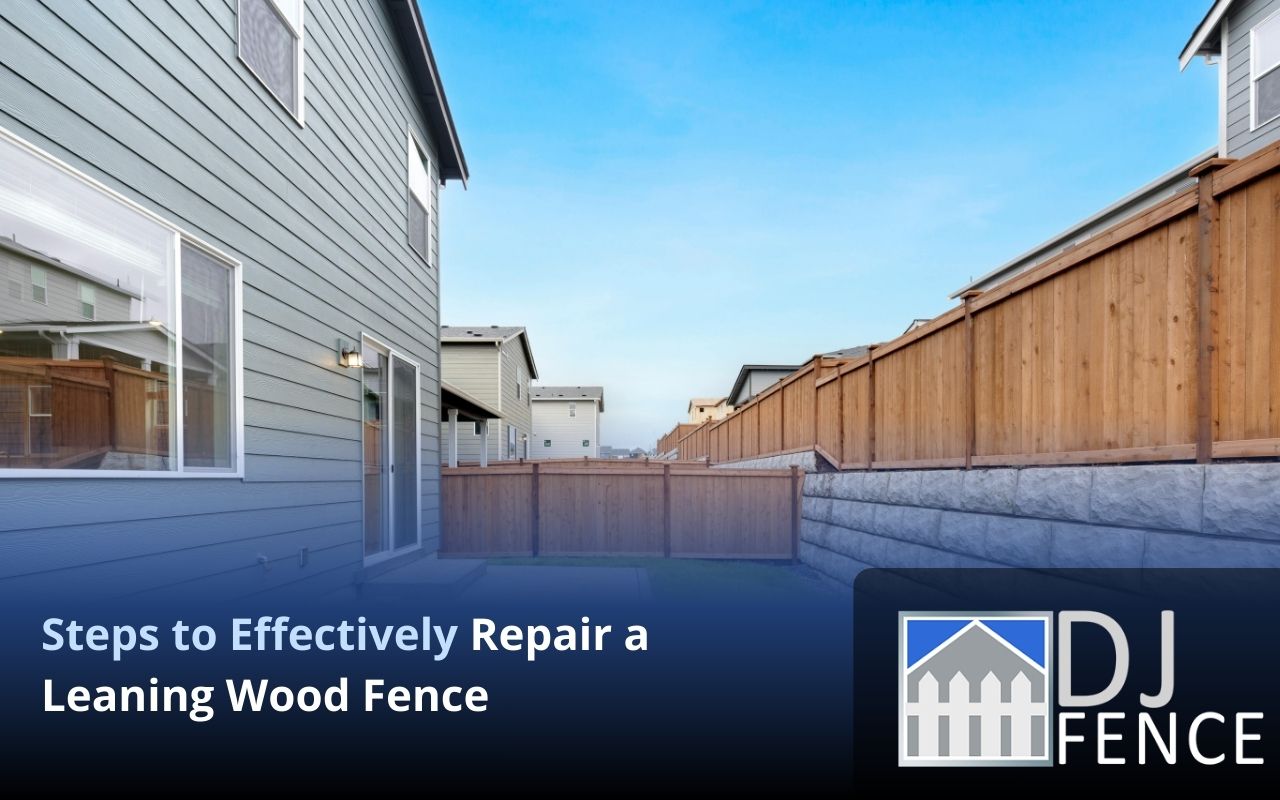
A leaning wood fence can be more than just an eyesore; it can threaten property boundaries and curb appeal.
Imagine stepping into your garden and finding your once-sturdy fence tilting precariously, inviting pests and potential disputes.
Repairing a leaning wood fence might seem intimidating, but a structured approach makes it manageable and effective. For helpful guidance on the right tools for fence repair, check our dedicated guide.
Statistics show that neglected fences can reduce property value by up to 10%, emphasizing prompt repair.
Many homeowners face leaning fences after harsh weather. This guide will help you repair leaning wood fence efficiently.
Whether you’re a DIY enthusiast or a first-time fixer, these steps will restore your fence’s upright position.
Assessing the Damage
Before repairing fence panels or posts, thoroughly assess the damage. Walk the fence and note every lean, wobble, or sag.
Identify which posts are leaning and if panels are warped, cracked, or missing fasteners. Accurate assessment is essential. Learn more about how to repair wooden fences for detailed instructions.
Record post depths, panel heights, and distances between supports to buy the correct materials for repair.
Determine the root cause: soil erosion, wood rot, or storm damage. Address drainage issues if water pooling occurs.
This evaluation phase enables you to develop a precise plan and repair leaning wood fence successfully.
Gathering the Necessary Tools and Materials
Gather tools: post-hole digger, shovels, level, measuring tape, gloves, safety glasses, hammer or nail gun.
Materials include concrete mix, gravel, replacement posts, galvanized nails or screws, and metal post anchors for support.
Consider renting specialized equipment like cement mixers or plate compactors if multiple posts need setting.
Stock rust-proof hardware and matching wood components to prevent interruptions mid-project.
Securing the Fence Posts
Assess stability: light leans can be corrected by realignment, while rotted posts require full replacement. Expert advice on repairing fence posts can save time and ensure safety.
Dig around the base to inspect condition, ensuring posts are placed at correct depths for durability.
Add gravel for drainage, brace temporarily, then pour concrete. Allow it to cure before applying lateral pressure.
Properly secured posts create a durable fence line, addressing lean issues and improving structural integrity.
Straightening the Fence Panels
Remove old fasteners and detach panels. Lay them flat and inspect for damage.
Minor warps can be corrected with clamps or gentle pressure. Severely warped boards may need replacement.
Rehang panels using exterior-grade screws. Use a level to ensure alignment and avoid future sagging.
Following these steps ensures your panels remain flush, supporting efforts to repair leaning wood fence effectively.
Reinforcing the Fence Structure
Add metal post anchors or brackets for extra support at ground level. Secure with bolts or driven into soil.
Install diagonal cross-braces to distribute forces and prevent panels from twisting under wind loads.
Attach horizontal stabilizer bars between posts to maintain spacing. Use carriage bolts for secure connections.
These reinforcements ensure your repaired fence stands upright and withstands environmental stresses for years.
FAQ
How can I repair leaning wood fence without removing posts?
Lightly leaning posts can be stabilized by realignment and bracing. For severe cases, partial replacement may be needed.
What tools are essential to repair leaning wood fence?
Post-hole digger, level, hammer, gloves, screws, and concrete mix are key for safe and effective repair.
Can damaged fence panels be reused?
Minor warps can be corrected with clamps or pressure. Severely damaged boards should be replaced for longevity.
How do I prevent future leaning?
Ensure proper post depth, use concrete for stability, apply preservative, and reinforce with braces and hardware.
Treating and Sealing the Wood
Sand rough or patched areas, remove dust, then apply wood preservative on cut ends and exposed posts.
After curing, apply exterior-grade sealant or stain in at least two coats. Allow drying between coats.
Sealing protects against moisture, UV rays, and pests, extending the fence’s life and reducing frequent repairs.
Adding Finishing Touches
Replace damaged picket caps, finials, and post toppers for cohesive aesthetics. Upgrade rusted hardware for durability.
Enhance landscaping with shrubs and mulch to improve appearance and prevent moisture buildup around posts.
Ensuring Long-Term Stability
Inspect twice a year for tilts, loose fasteners, or rot. Tighten screws and reseal vulnerable areas as needed.
Maintain gutters, downspouts, and grading to prevent water pooling. Temporary braces can help during storms.
Using galvanized hardware and quality sealants ensures your repair leaning wood fence remains straight and strong for years.
If you need professional help at any stage, contact DJ Fences to secure your property and get expert guidance.
